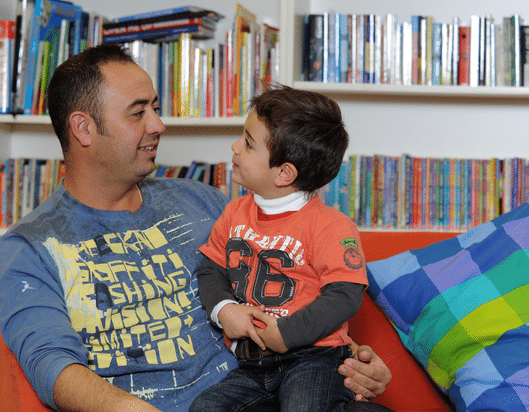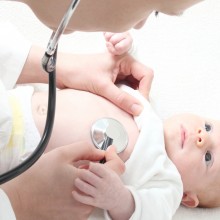Chromosome 15 imprinting disorders

Chromosome 15 imprinting disorders are caused by a fault in a group of genes on chromosome 15. They include Prader-Willi, Angelman and Dup15q syndromes.
Children with Prader-Willi syndrome (PWS) or Angelman syndrome (AS) usually experience a wide range of physical symptoms, learning difficulties and behavioural problems.
PWS can lead to excessive appetite, overeating and weight gain that can cause life-threatening obesity, as well as autism features and other mental health issues. AS is associated with seizures and movement difficulties. Children with AS are usually non-verbal.
Chromosome 15q duplication syndrome (Dup15q) is also an imprinting disorder. It can lead to seizures and cognitive and behavioural problems.
Chromosome 15 imprinting disorders occur when several genes on chromosome 15 are switched off through a chemical change to DNA called methylation. Usually, PWS and AS are not inherited from the child's parents, with random changes to these genes occurring around conception, while Dup15q can be inherited.
Diagnosis can help families to identify treatment strategies that aim to reduce and manage symptoms, in some cases, it can assist with genetic counselling providing informed reproductive options to the families.

Who does it affect?
Who does it affect?
- PWS and AS each affect about one in 15,000 people.
- About 3,000 Australian families live with PWS and AS.
- Up to 3% of people with autism spectrum disorders are also diagnosed with Dup15q syndrome.
- Boys and girls of all ethnic backgrounds can be affected by chromosome 15 imprinting disorders.
Our Chromosome 15 imprinting disorders research
Our Chromosome 15 imprinting disorders research
- Our Chromosome 15 disorders biobank is recruiting 100 people with PWS and AS. We collect tissue samples including blood and skin cells, link them to family medical histories and perform medical and psychological assessments. The facility aims to enable future research to better diagnose and treat newborns, children and adolescents with genetic diseases.
- A particular focus is personalised therapies for associated mental health problems and autism features of these syndromes. Anxiety and psychosis especially can be problems in PWS.
- We have also developed a new test to screen for three rare genetic disorders simultaneously in newborns.
- We have shown this to be feasible, reliable and scalable in about 17,000 Victorian infants.
- We have also conducted health and economic studies assessing the potential benefits of adding chromosome 15 imprinting disorders to the newborn bloodspot screening (heel prick test performed on virtually all infants).
- We are developing gait-analysis wearable technology for use as a real-world (non-laboratory) digital-endpoint in clinical trials and research with children who Chromosome 15 disorders.
Impacts of our research

Impacts of our research
- We established the first Australian Chromosome 15 disorders biobank with the Prader-Willi Research Foundation Australia and the Foundation for Angelman Syndrome Therapeutics. It lays the foundation for new lines of research to potentially help thousands of families worldwide.
- Data and samples from the biobank will be available to other researchers and industry, maximising impact.
- Our recent studies demonstrated the economic benefits of early diagnosis and expanding newborn screening to include Chromosome 15 imprinting disorders.
- We have already shown that early diagnosis is possible using a test we developed that can screen for these syndromes simultaneously.
- We are leading a study trialling this combined newborn screening in 75,000 newborns.
- Adding these chromosome 15 imprinting disorders to newborn screening programs would allow for earlier diagnosis and using targeted interventions as they emerge, such as gene therapy for Angelman syndrome.
- For Angelman and Dup15q, most infants do not receive an early diagnosis that would allow intervention in the first year of life. But such early diagnosis, if available through newborn screening, could prevent the diagnostic odyssey, reduce medical costs and the significant stress and anxiety currently experienced by the families while they await a diagnosis.
- For Prader Willi, diagnosis in infancy allows for early initiation of growth hormone treatment to improve long term health outcomes.
- Our new techniques in non-laboratory testing of gait and balance in children who have Chromosome 15 disorders could one day reduce the testing load for families in clinical trials and lead to highly sensitive, objective data collection from the home or community environment.
Our vision
Our vision
We aim to improve diagnosis and treatment for these complex syndromes. This should reduce the impact of symptoms on our health system and improve the lives of affected children and their families.
Where to next?
Where to next?
- We are looking at further prospective validation of the newborn screening in 100,000 infants in Australia to collect evidence required for it to be added to the standard of care newborn screening nationally.
- We are working with scientists at Research Triangle Institute International and its Early Check program in North Carolina to further validate the newborn screening test prospectively and ensure the results can be replicated.
- That work will be used to support an application to the committee that recommends newborn screening tests in the US, the Committee for the Recommended Uniform Screening Panel.






